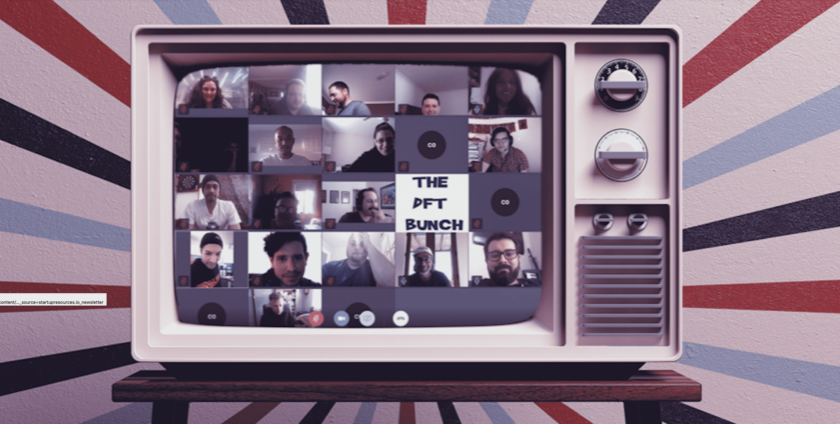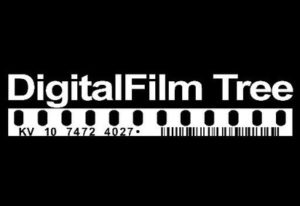HITS

DigitalFilm Tree: Democratizing Tech and Information to Empower Storytellers
Story Highlights
Since its entry on the scene in 1999, the mission of Hollywood, Calif.-based post-production, software and process consulting company DigitalFilm Tree has remained the same: To “democratize the technology and information that empowers storytellers with the best tools available for any budget,” according to Nancy Jundi, company COO.
DigitalFilm Tree CEO Ramy Katrib started the company with the goal of using the then-emerging DV format to create a DV-based editing system that could cut a film affordably without sacrificing quality. Additionally, the company was founded with a focus on education and offering more access to technology through training: a core offering that continues today.
“We serve core functions such as color and VFX, both of which will always be cornerstones, but we continue to live on the bleeding edge of innovation,” Jundi told the Media & Entertainment Services Alliance (MESA).
“To that end, we have a longstanding R&D department that creates software for specific pain points as well as building technology that helps TV to best leverage game engine technology for pre-visualization and virtual production in the same manner that feature films have been able to benefit from these tools,” she said.
Right now, the company is “hyper focused on both information security for those working from home, as well as our cloud-based workflows which allow for dailies to happen largely in the cloud, both keeping people employed while safely working off set,” she pointed out.
The COVID-19 challenge
Despite challenges presented to the media and entertainment industry by the pandemic, the coronavirus “has not shaped what we do; it has revealed what we do,” according to Jundi.
 The work done and developments achieved by DigitalFilm Tree in the world of remote workflows over the past two decades have left it “uniquely positioned” to meet these challenges as soon as they arose, she noted, explaining: “Our workflows — while developed long before the coronavirus crisis — allowed for the seamless transition of our traditional facility clients from their studios and into their homes overnight, without loss to their timelines or risk to the health of their employees or their media. We also deployed remote systems and routers to production teams still working to deliver shows, allowing them to approve final color, VFX, and titles without compromising picture quality, impacting workflows, or impeding airdates.”
The work done and developments achieved by DigitalFilm Tree in the world of remote workflows over the past two decades have left it “uniquely positioned” to meet these challenges as soon as they arose, she noted, explaining: “Our workflows — while developed long before the coronavirus crisis — allowed for the seamless transition of our traditional facility clients from their studios and into their homes overnight, without loss to their timelines or risk to the health of their employees or their media. We also deployed remote systems and routers to production teams still working to deliver shows, allowing them to approve final color, VFX, and titles without compromising picture quality, impacting workflows, or impeding airdates.”
DigitalFilm Tree recognizes that not every organization is ready to make the leap to the cloud.
That is why the company, “as an essential service provider for broadcast media and remote workstations, remains open for physical needs with a smaller crew of less than 10 people at any given time practicing distancing and sanitizing measures,” according to Jundi. The company can serve as an organization’s “intermediary resource for physical shipments, uploads and re-encodes,” she said, adding: “We are staffed to receive physical media (drives/LTOs) from your shows, making the media securely available to anyone authorized for access. DigitalFilm Tree’s network infrastructure includes servers at One Wilshire and multiple ISP services for a total of 21GBs of up/down internet capability.”
A telling case study
The CBS TV show “NCIS: Los Angeles” has been DigitalFilm Tree’s “paramount example of all services from remote color and cloud based editorial to leveraging game engine technology for planning stunt takes,” Jundi said.
She added: “They’ve allowed us to be a true partner in every respect” for their challenges, and that “makes us better as a company and team.” In fact, ‘Bring us your pain points’ is something you hear DFT-ers say often because we truly thrive on challenges and solving for active needs,” she added.
GeoPost, meanwhile, is supported by DigitalFilm Tree’s interdisciplinary, hands-on team of post, IP and networking wizards, she told MESA. Services include camera raw storage with media asset management and transport, international production servicing, and enterprise supply chain management.
“By moving their dailies workflow to the cloud, a client can further minimize the amount of hands needed on set to manage footage, physical shipping of media and eliminate both the human risk and budget consuming task of physically preparing drives for your teams,” she said.
DFT Media Security
DFT Media Security, meanwhile, “recognizes that the home is not the most secure place to work, and now is not the time to settle for bad network and security practices,” according to Jundi.
Included under the DFT Media Security umbrella are: Information Security, Network Intrusion Detection & Monitoring, Managed Firewalls/VPN, DNS Filtering for Security and Endpoint Malware Detection/Mitigation DFT TV.
“While some shows have gone on hiatus, others have moved their teams into individual homes, relying on physical drives to be shuttled between creatives, using slow home internet connections, full of potential security blind spots,” Jundi noted.
 “We are aware of both the bottlenecks and vulnerabilities of this workflow, which emboldened us to develop grander scale solutions with more determination than ever before,” she said, adding the company is heavily focused on “solving any and all pain points in this manner as it protects all of us in the industry.”
“We are aware of both the bottlenecks and vulnerabilities of this workflow, which emboldened us to develop grander scale solutions with more determination than ever before,” she said, adding the company is heavily focused on “solving any and all pain points in this manner as it protects all of us in the industry.”
To that end, the company has “pivoted our internal network and security capabilities to accommodate staff, clients and other vendors from wherever they may be,” she said.
At the helm of DigitalFilm Tree’s overall security architecture is its chief information security officer, who is a Certified Ethical Hacker and is Certified Information Systems Security Professional (CISSP)-certified.
Success with Cinecode
Also significant for the company is Cinecode, its pre-visualization and virtual production leg that was formed in 2018.
“We are laser focused on serving the needs of television shows to prototype their stories from pre-development to physical productions,” Jundi said.
“To date we have served over seven major projects, providing measurable benefits to cinematographers, costumers, blocking, art direction, stunt, set and production design teams,” she noted.
Cinecode leverages game engine technologies (such as Unity and Unreal, as seen on productions including “The Mandalorian,” “NCIS: Los Angeles” and “Ted Lasso”) “to empower TV productions to quickly and affordably iterate and prototype their stories in the virtual environment, making physical production planning and efficiency exponentially better than current methods,” she added.









